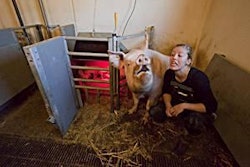Hispanic-Americans are highly sought-after customers for food and beverage marketers and retailers, and represent a prime market segment for poultry marketers.
The Hispanic segment, in fact, is in a sweet spot for poultry marketers because those families traditionally have been bigger and spent more, on average, on food shopping. They have had a propensity for buying fresh meats and poultry. And they have placed more emphasis on “cooking from scratch.”
Fresh perspective on the Hispanic market is now available in a report from the Latinum Network based on the latest figures on spending behavior from the U.S. Bureau of Labor Statistics.
Countering the downturn
U.S. Hispanics propelled real growth in food, beverage and restaurant sectors in recent years, even when other sectors were weak. In fact, while the American economy floundered, and consumers as a whole tightened their belts, the growth in Hispanic spending was twice the growth in general market spending.
Most important growth driver
The report shows that Hispanics have become the most important U.S. demographic growth driver in the food, beverage and restaurant sectors. They accounted for 50% of the growth in spending between 2005 and 2008 and were responsible for 30% of the $40 billion growth in the food business.
According to the report, the growth resulted primarily from an increase in the number of U.S. Hispanic households, but also from an increase in consumer spending among U.S. Hispanics. This new spending offset 84% of the real decline in demand in the $1 trillion sector the food, beverage and restaurant business.
Key findings
Following are key findings from the report:
- Over $9 billion of new spending in the food and beverage category was created by Hispanics declining categories such as fish and seafood, fresh fruit juice and dairy products between 2005 and 2008.
- $5.9 billion of new spending was by Hispanics in growing categories where they represent approximately 20% of the growth such as vegetable juices and fruit drinks, meats including pork, ham and mutton and frozen meals, which represent the highest-growth food category among Hispanics. It appears that busy Hispanic professionals are increasingly turning to frozen meals to feed their children.
- While health-and-wellness trends reduced non-Hispanic consumption of beef, ethnic preferences buoyed Hispanic buying of beef.
- Hispanics are eating out more, driving growth in fast food and full-service restaurants. They are increasingly likely to eat out during the work day, driving new sales in fast-food breakfasts and full-service lunches.
- David Wellisch, co-founder and principal of Latinum Network, said, “Clearly, U.S. Hispanics represent a growing market in the midst of a mature U.S. consumer economy, but in order to win over this important demo, brands must make an authentic appeal to the unique behaviors and tastes of U.S. Hispanics through distinct products, channels, messaging and marketing strategies.”
Opportunity to look homeward
Even better news is that Hispanic spending will only gain strength in the years ahead. “With total U.S. Hispanic household spending expected to top $1 trillion by 2013, and emerging markets around the world (such as China or India) fraught with political risk and hidden costs, institutional investors have a unique opportunity to look homeward,” said Alexia Howard, an analyst at Sanford C. Bernstein. She indicated the growth in food, beverage and restaurants can be reliably predicted through 2050.




.jpg?auto=format%2Ccompress&fit=crop&h=167&q=70&w=250)













